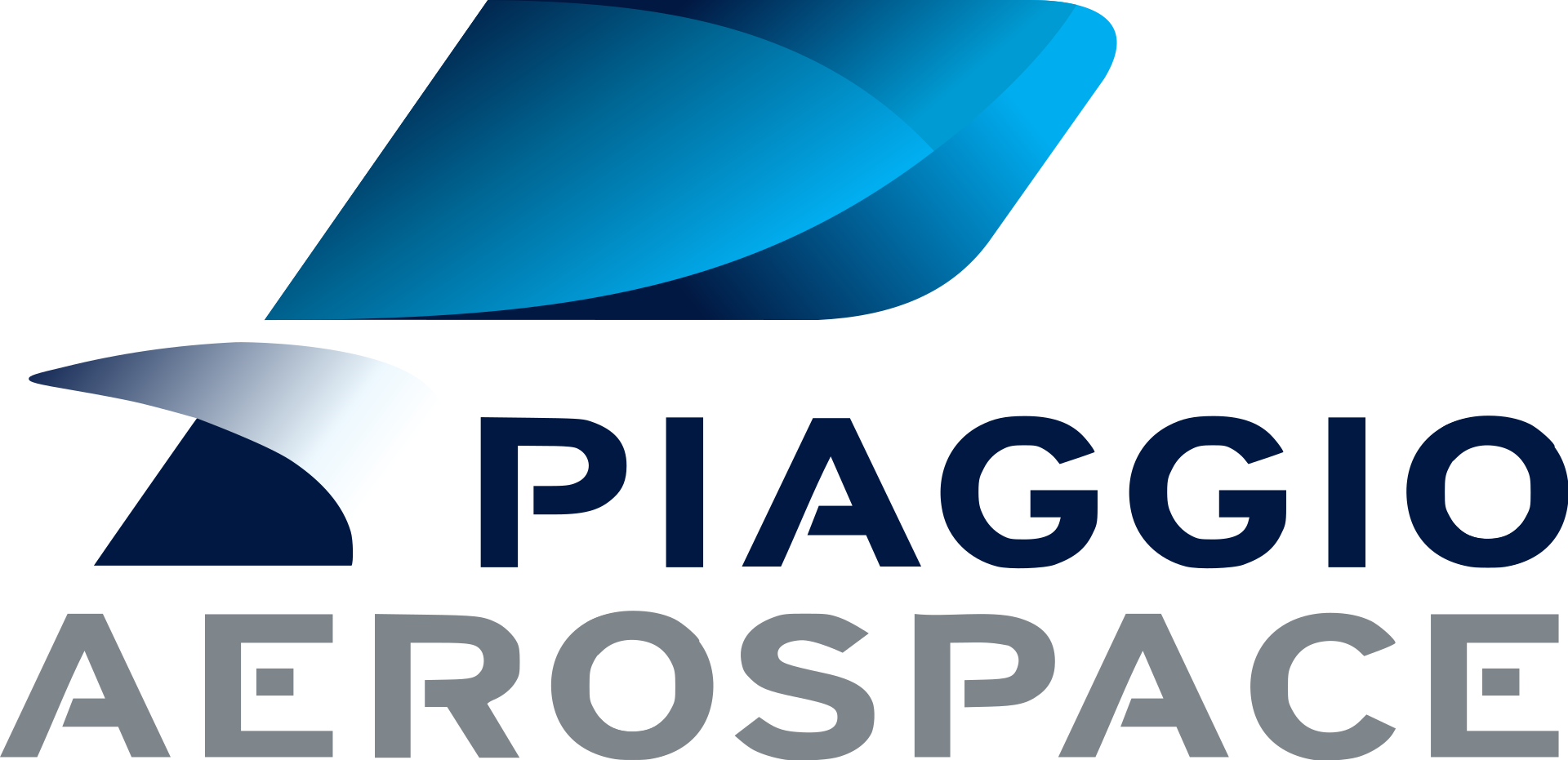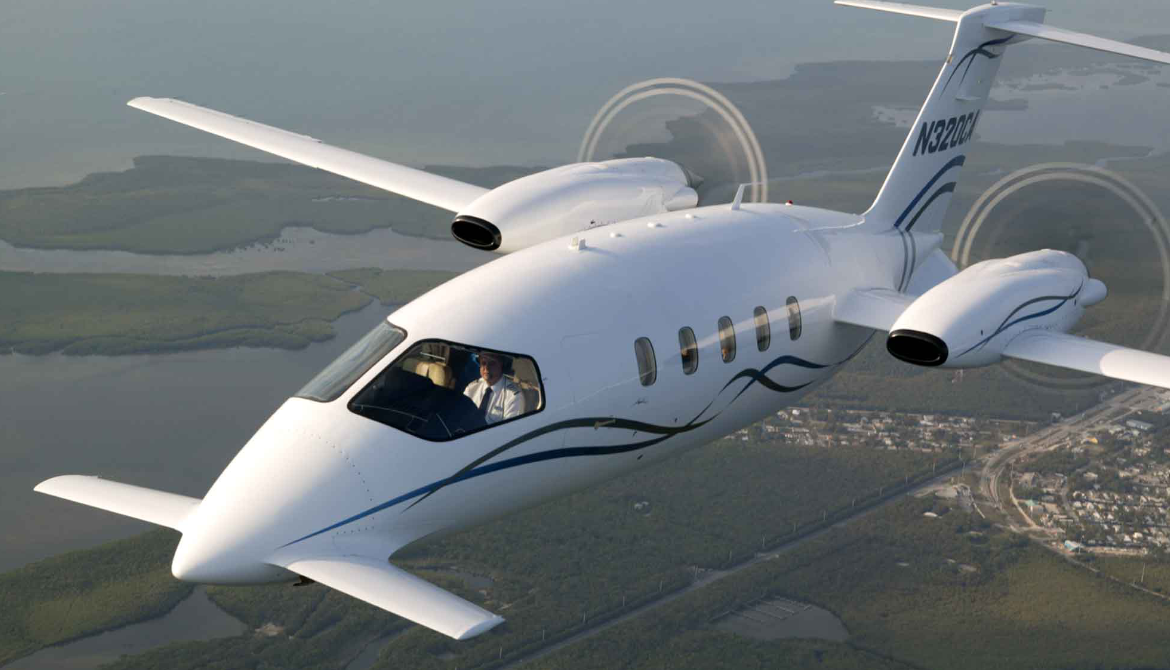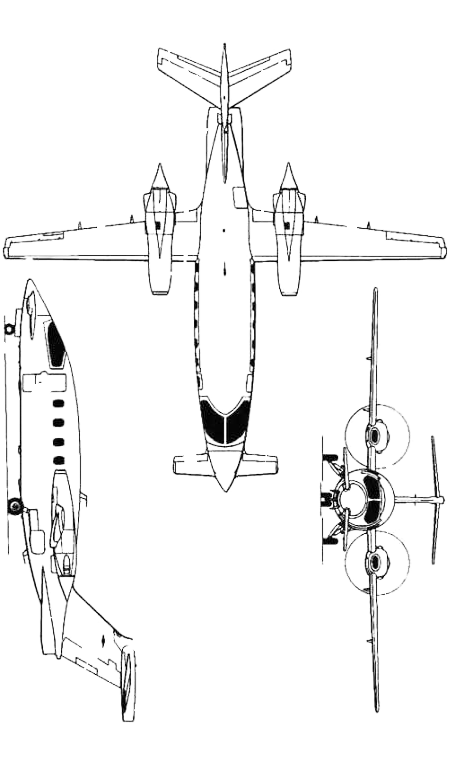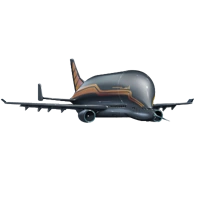Piaggio Aerospace Piaggio P.180 Avanti
 |
|
| General information | |
|---|---|
| Type | Executive transport |
National origin Italy
Manufacturer Piaggio Aero
First flight 23 September 1986
Introduction 30 September 1990
Status In production
Primary users Italian Air Force
Italian Army
Italian Navy
Avantair
Produced 1986–present
Number built 246 (Dec 2020) - P1HH Hammerhead
.
History Piaggio Aerospace
Piaggio P.180 Avanti
First Flight 23 September 1986
Produced 1986–Present

The Piaggio P.180 Avanti is an executive/VIP light transport aircraft, designed by Piaggio Aero and built in Italy. It features twin, wing-mounted turboprop engines, in a pusher configuration. The Avanti seats up to nine people in a pressurized cabin and may be flown by one or two pilots. The design is of three-surface configuration, having both a small forward wing and a conventional tailplane, as well as its main wing, with the main wing spars passing behind the passenger cabin area.
A 1980s wave of new-generation planes, developed to appeal to Fortune 500 clients, included Piaggio's Avanti and Beech Aircraft Corp.'s very similar Starship. Engineering studies for the airplane that would eventually be named Avanti began in 1979 and designs were tested in wind tunnels in Italy and the United States in 1980 and 1981, conducted by Professor Jan Roskam from the University of Kansas (using Wichita State University's wind tunnel and Boeing's transonic wind tunnel in Seattle) along with Professor Gerald Gregorek at Ohio State University (using OSU's 2D pressure wind tunnel).


The Avanti's counter-rotating turboprop engines are placed on a mid-set, high-aspect-ratio wing located just behind the cabin. The three-surface design incorporates both a T-tail and a pair of small, fixed forewings having slight anhedral and landing flaps. On the Avanti II these flaps automatically deploy in concert with the main wing flaps. This reduces the load on the tailplane, even when the flaps are deployed, by reducing the pitch-down moment created by the deployment of the main wing flaps. This in turn allows the size of both the tailplane and the main wing to be reduced This particular three-lifting-surface configuration was patented in 1982.

0
KmCeiling
0
KmCombat RANGE
0
Km/hAircraft Speed
0
Max Crew
Photo Gallery
Piaggio Aerospace
Piaggio P.180 Avanti


Piaggio-Selex Aerospace
Piaggio P.180 Avanti
First Flight 23 September 1986
General Info
Data P.180 Avanti
-
-
- Crew: 1
- Capacity: 7–9
- Length: 14.4 m (47.3 ft)
- Wingspan: 14 m (46 ft)
- Height: 4.0 m (13 ft)
- Wing area: 15.99 m2 (172.1 sq ft)
-
Powerplant
- Empty weight: 3,799 kg (8,375 lb)
- Max takeoff weight: 5,488 kg
- Fuel capacity: 1,271 kg (2,802 lb)
- Max landing weight: 5,216 kg
- Horizontal stabilizer area: 3.83 m²
- Powerplant: 2 × Pratt & Whitney Canada PT6A-66B turboprop, 630 kW (850 shp) each ISA+28C Flat Rated
-
-
Performance
- Maximum speed: 740 km/h (460 mph, 400 kn) FL310 high speed cruise
- Cruise speed: 589 km/h (366 mph, 318 kn) FL410 long range cruise
- Minimum control speed: 190 km/h
- Range: 2,800 km (1,740 mi, 1,510 nmi) 4 passengers, 100-nm alternate
- Ferry range: 2,830 km
- Service ceiling: 12,000 m
- Time to altitude: 10 min to FL 250
Links to Youtube & Others
Genève, 29 mei 2024 – Tijdens de European Business Aviation Convention & Exhibition (EBACE2024) op de luchthaven van Genève stond op de staticshow een Piaggio P.180 Avanti II EVO die bestemd is voor een klant in Japan.
Piaggio Aerospace
Piaggio P.180 Avanti
Avanti EVO is yet another step forward. Its speed exceeds 400 KTAS, faster than many jets
Youtube Link
Avanti EVO blends the very best of Italian style, peerless craftsmanship, and intelligent thinking to create an aircraft that stands alone for its values.








.png)



